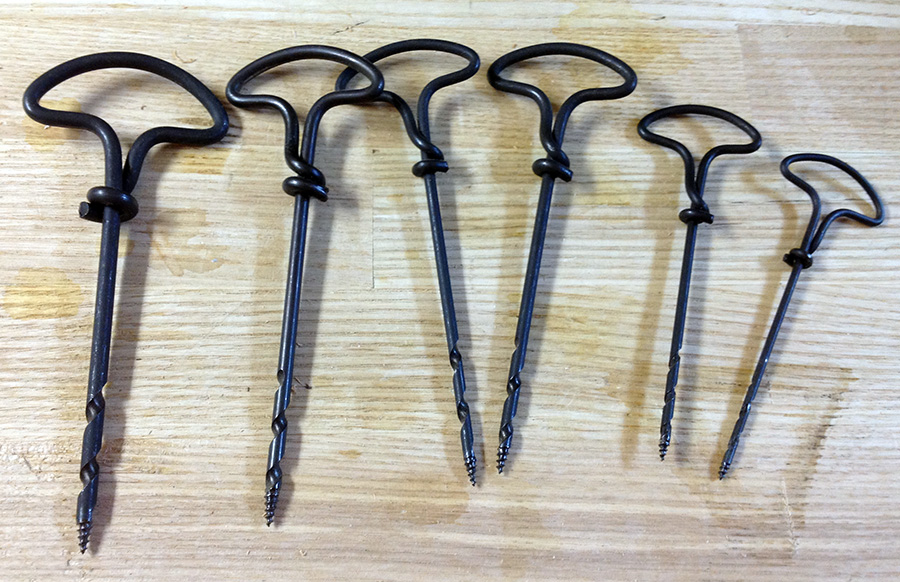Did you know that gimlets can be extremely useful tools, especially for precision woodworking jobs? In fact, it is always a good idea to have gimlets of different sizes in your arsenal. Still, you must also know how to use a gimlet properly to avoid damaging it beyond recovery.
Every tool has a proper way of use, so to help you understand how gimlets are supposed to work, I will tell you how to use one correctly. I will also cover how to sharpen a gimlet, as sharpening them can drastically improve its lifespan. Let’s finally get into the article.

How to Use a Gimlet
To use a gimlet tool, simply follow these steps:
- Mark the piece of wood where you want to bore a hole.
- Place the gimlet tip on the mark and apply pressure while twisting in a clockwise motion.
- After the gimlet “catches” the wood, simply continue twisting without applying pressure.
- Remove the gimlet in a counterclockwise motion.
Gimlets are simple and easy to use and are primarily used to drill small pilot holes for screws or nails to avoid chipping the wood. However, they can also be useful for boring small holes in leather and act as a replacement for an Awl tool.
What Is a Gimlet Tool Made Of?
When the gimlet tool was first invented, it was made from one piece of steel. A twisted steel part acted as a handle, making it very uncomfortable to use. Later, they started making the gimlet tools with wooden handles, making them more ergonomic and convenient.
Gimlets today are made similarly, from high-tensile stainless steel, and the handle part of the body is covered with high-density plastic, making the tool much cheaper and very durable.
The body and tip of the gimlet is hardened-steel as well to prevent it from bending or cracking when you apply pressure.
Additional information
The name gimlet comes from the French word “guinbelet”, which means “to bore” or “to twist”. It was invented around the middle of the 1800s.
It is defined in Joseph Gwilt’s Architecture from 1859 as a small tool with a semi-cylindrical form, with a small handle on one side and a screw trip on the other.
With this definition, a gimlet tool should always be considered small and different from an auger tool, which is usually similar in design but larger. An auger is also used to drill larger holes in wood for other purposes.
Gimlet tools have also been compared to Bradawl (Awl), but they have different designs and purposes. An Awl can be described as a piercing tool because it looks like a large needle, often with a wooden handle.
Its most common use is to puncture holes in leather, but it can also be used to mark where leather needs to be cut.
Read More: How to Build a Hut in the Woods
How to Sharpen a Gimlet
If you use a gimlet incorrectly or excessively, it will become dull and drill a small hole with too much effort. In such cases, it will require you to use too much force to push the gimlet while twisting it, and result in an unpleasant experience.
The good thing is that gimlets can also be sharpened, even though they are very small. To successfully sharpen a gimlet, you would require small files, which you can purchase at any hardware store or online.
Only the inner edge of the gimlet’s spiral body is sharpened. You can easily tell which it is by sliding your fingers across it and sensing that it is as thin as a knife.
The way to sharpen the edge is by inserting the file into the spiral space and moving it outwardly. This step is repeated until the knives become sharp to the touch.
Sharpening the spiral knives on a gimlet is important, as they remove the wood chippings when the tool drills the hole. Unfortunately, the tip of the gimlet is hard to sharpen; if it becomes too dull, the tool will be rendered useless.
Also Read: How to Make a Torch in the Forest
Conclusion
Now that you know how to use a gimlet and sharpen all your gimlets, you should have no problem using them for many years to come.
As with any tool, proper usage and maintenance are crucial to preserving it and extending its lifespan for as much as possible, which is why I have included a section on sharpening a gimlet.
Besides, you have also learned some valuable information about the gimlet’s origins and the materials from which it is made.
If you have any questions or want to share a useful tip, feel free to comment below!
